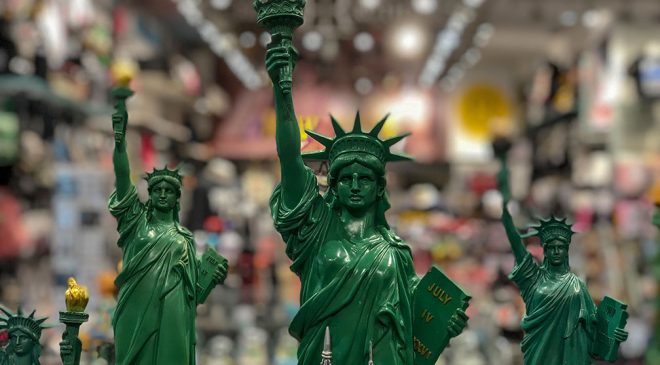Dan Pratt wrote a brilliantly concise explanation of the Austrian School theory of business cycles (booms and busts), on Facebook. Here it’s reprinted in full:
Here’s a little lesson on the Austrian Business Cycle Theory that will illustrate why central banking and the expansion of the money supply is ultimately harmful:
In a free market (no central banking), the interest rate (the price of borrowing money) is a function of the amount of saving being done by consumers. If consumers have a high time preference, they will not save much right now and they will work to satisfy their wants here in the present. If consumers have a low time preference, they are looking to the future and saving for later. High time preferences and less saving equate to a higher interest rate (there is not much savings available, so the demand for loans is high relative to the supply). Low time preferences and more saving equate to a lower interest rate (there are a lot of savings so the supply can satisfy the demand at a lower price).
The people who are borrowing are businessmen who are focused on long-term investments in the early stages of production, investments that won’t yield a return until much later. When interest rates are high, only the businessmen with the safest of plans for investment actually receive loans (low return). When interest rates are low, investments can be much more varied and many can be more risky (with a much higher possibility of return). This is simply what happens in the free market as banks decide who to lend money to.
When an investment in the early stages of production (e.g. building a factory or a mine) gets funding through a loan, that funding is actually going towards a lot of spending. Workers need to get paid and those workers need to buy stuff to take care of themselves and their families. Materials need to be purchased and the workers who create those materials need to get paid as well. This spending and the accompanying shift in the economy can happen specifically because of the saving that consumers are doing. Consumers are not spending and that allows the economy to cater to the spending that the investments in the early stages of production create.
Unfortunately we are not in a free market. The money supply is manipulated by politicians and central banks. When the money supply is increased to a significant degree, that money always starts in the banks. Because there is more money in the banks, the interest rate gets lowered (often this is the exact goal of money printing). The lower interest rate is not due to the savings of consumers because consumers have not changed their habits (they are still spending as they were before). The lower interest rate is completely artificial. Even so, businessmen still have the incentive and the opportunity to take out loans to invest in the early stages of production. Many of those loans are risky due to the reasons discussed above.
This increase in spending by businessmen who received loans and the continuing spending by consumers (who still have high time preferences) creates a competition in the market. Because the loans given out by the banks are not backed by actual savings, both consumers and businessmen are trying to buy the same goods and services in the market. This competition drives up prices higher than they were before. The increased costs result in cost overruns for many investments, including the risky investments (which are more sensitive to cost overruns). This process continues until many investments fail, businesses go under, and loans have to be liquidated. Because politicians do not want to preside over an economic recession that this liquidation causes, they print more money which starts the cycle all over again, all in the name of “economic stimulus”.
In reality, the “stimulus” provided by the combination of politicians and central banking only creates artificial booms, not backed by real growth in the economy. These booms always result in busts and the only cure is for the market to correct itself by discovering the true interest rate based on the real savings of consumers, free from the intervention of an expansionary monetary policy. Only then can true economic growth occur.
Beautiful.
Skyler.



